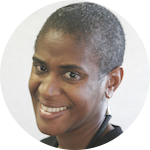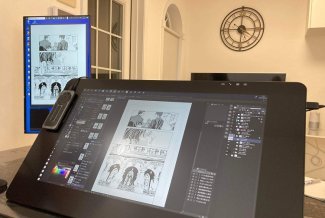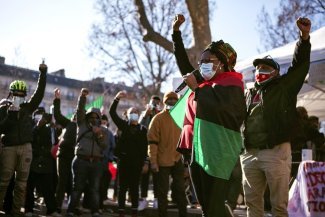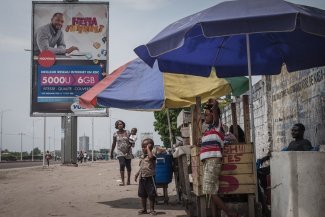Despite only opening in late 2015, the Whitney Plantation is still the only museum dedicated to slavery in the United States.
In 1989 on his first visit to the United States, Senegalese historian Dr Ibrahima Seck heard a Mississippi bluesman perform.
“What I was hearing was so familiar,” says Seck of that mini concert by the legendary James “Son” Thomas, who died in 1993. “It was like home.”
That personal connection inspired Seck, whose homeland’s Gorée Island was a major slave trading outpost, to return to school and earn a doctorate in the history of the institution that brought so many West Africans to the United States – along with their songs, foods, skills and religions. Now, working at an old Louisiana indigo and sugar plantation transformed into a “site of memory,” Seck is guiding others to a deeper, human understanding of one of the darkest chapters of America’s story.
“It’s everybody’s story. Everybody should be educated about it,” Seck, who directs research at the Whitney Plantation, told Equal Times. “The vast majority of people don’t know about it. They just don’t know. They think slavery is just about people who were like animals being given orders. They don’t think that these people were human beings. They had a lot of agency…to do something with their lives despite slavery.”
John Cummings, a New Orleans real estate investor and lawyer who had taken on civil rights cases, met Seck soon after buying the Whitney in 1998. Seck was in Louisiana then as part of a Gorée Island delegation invited to help open an African-American museum in the state’s south-west. Cummings, who is white, brought Seck in to help him realise his vision for the Whitney as a place where hard truths could be confronted.
To date, the Whitney is the only museum dedicated to slavery in the US. And despite taking more than a decade to bring to fruition, in a way, the Whitney is coming into its own just in time, as America is grappling anew with its old burden of race.
Seck hopes visitors will leave the Whitney – which consists of an original two-story, 14-room main house, as well as an overseer’s house, barns and slave cabins – with the realisation that “nobody is born a racist. But you [can] grow up in an environment that really builds these racist ideas in the minds of people.
“The only way we can fix a problem is to get educated in the problem,” Seck said. “And we know that if we don’t fix problems, they keep cropping up in the future.”
A counterweight to resurgent white supremacist views
With deep scholarship, first-person testimonies, restored buildings and evocative art, the Whitney counters the narrow, exclusionary ideas espoused by white supremacists groups like the National Policy Institute and the Ku Klux Klan that have gathered new popularity in recent years.
The recent opening of the National Museum of African American History & Culture in Washington DC, and regional institutions like the Whitney, an hour’s drive from the tourist mecca of New Orleans in the town of Wallace, allow people to have different conversations about what it is to be American.
By the time it had completed its first full year of operation in late 2015, the Whitney had drawn 34,000 visitors; about 55,000 visitors were projected for 2016.
Those who arrive early for one of the Whitney’s 90-minute walking tours can wander through a gallery of maps, shackles and other artifacts that trace the history of the brutal Atlantic slave trade, which saw millions of African men, women and children transported to the New World over a period of 400 years.
Ambroise Heidel founded the plantation after emigrating from Germany in 1721. He grew wealthy on indigo and his son moved to sugar production.
“The life of a slave was marked by permanent fear of punishment and tireless quest for freedom,” Seck writes in his book about the plantation, Bouki Fait Gombo, which is named after a Louisiana Creole proverb.
Seck explains that: “Slaves often escaped and became maroons in the swamps to avoid deadly work and whipping. Those recaptured suffered severe punishment such as branding with a hot iron, mutilation and, eventually … death.”
Heidel’s heirs eventually sold the plantation just after the Civil War to a New Yorker who named it after Harry Whitney, a writer and Arctic explorer. In 1990, a chemical company bought the property with plans to build a rayon factory; this never materialised.
Lack of knowledge
Outreach and education is a key part of the work undertaken at Whitney. Abram Himelstein – a writer, editor and former schoolteacher – is the co-founder of the Neighborhood Story Project, a New Orleans non-profit which aims to share “our stories told by us”. As well as chronicling the city’s neighbourhood history and post-Hurricane Katrina recovery, it also works to ensure that narratives that have been left out of official histories aren’t forgotten.
Himelstein grew up in the South and remembers school field trips to plantations where little if anything was said about the slaves who once worked and lived there. When he got older, he was astonished when his white friends held weddings at plantations. To Himelstein, who is also white, that reflected both a lack of knowledge of the brutal reality of slavery and the gulf between white and black experiences in the United States.
“I think every American should have to go to the Whitney,” Himelstein said.
Himelstein first visited with a group of teenagers who were in a creative writing class, shortly before the Whitney officially opened to the public. At the time, he said, a few other plantations were starting to shift their focus to slaves or to at least try to tell a more complex story of slavery. Himelstein believes the Whitney has accelerated that change.
“The Whitney’s existence threatened the whitewashing,” he said.
Courtni Becnel agrees. Having grown up in a predominately African-American community near the Whitney, where some of her ancestors had been slaves.
Becnel, like Himelstein, had been on plantation tours that ignored slavery. She found that narrative insulting. When she heard Cummings planned to open Whitney to the public she approached him and his team with sharp questions.
“I wanted to know what story they were telling. By the end of the conversation, I said: ‘You should just hire me.’”
They did. Becnel started as a tour guide a week after the Whitney opened. At the time, she was studying biology with plans to become a doctor. Her mother is still baffled that her daughter has put her medical career on hold indefinitely, while other relatives have asked Becnel why she wants to “rehash” slavery.
“No one is trying to play victim,’’ she said of the Whitney ethos. “We just want to make sure that no one has to feel this way ever again. ‘This’ being regarded as less than, whether white, black, LGBTQ or Muslim.”
Becnel added that the more she has learned about the horrors of the institution, the more she has understood about the strength of her ancestors.
“Overall it’s a wonderful feeling, knowing that you can walk this ground and be able to pay respect.”
An interest in history, particularly that of African-Americans, drew Tennille Edwards to visit the Whitney, where she wandered the grounds with the company of a guide. Edwards, an Atlanta-based human resources consultant, said she found her visit inspiring.
“It says: ‘We can survive and overcome.’’’
Weeks after her visit, Edwards was still thinking about the moment when her guide made a simple, powerful gesture, inviting members of her group to pick an orange from a tree growing near the plantation’s Antioch Baptist Church, which was built by slaves just after the end of the Civil War in 1865.
“That definitely resonated with me,” Edwards said. “Just having the chance to eat the orange that grew out of the ground that people tilled and made life out of.
“I definitely wanted to make that connection.”










